"Until now, these semi-tropical vegetables, unknown to most Dutch people, have been a rare sight here in the Netherlands," says Martina Huber. She has been growing semi-tropical crops in WUR's greenhouses under the guidance of Eric Schranz of the Biosystematics research group. For the researchers, the aim was to see if growing semi-tropical crops would be successful now that climate change is underway and horticulture also needs to adapt. This is with the intention of adding more biodiversity to Dutch horticulture. Because of climate change and increasingly hot summers, these crops are becoming interesting.
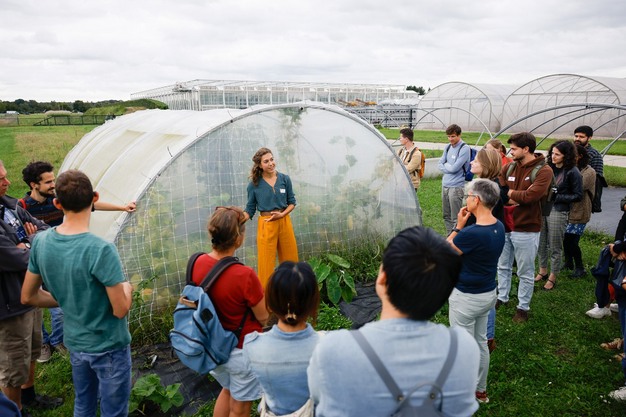
Martina tells visitors more about semi-tropical crops.
The intention was to do this in the most sustainable way possible, using as few chemicals as possible. No herbicides or chemical plant protection products were used during the cultivation of the semi-tropical crops. Spider mites are controlled with biological control agents.
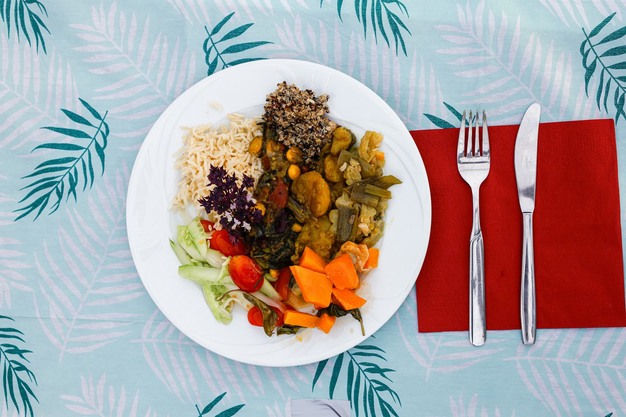
The results of the trial were eaten during the Harvest Festival.
Martina says the plants grew well. "With the help of the polytunnels, the growing season could be extended. Because of the sun's radiation, harvesting can be done until the end of October. With some crops, many flowers could be seen early, but to grow to fruits, like some beans, it took a bit longer. There were also a lot of aubergines. This is one of the most sensitive of the semi-tropical crops: they are especially sensitive to wind. Temperature and soil quality are determining factors when growing these semi-tropical crops. "
The researcher: "What I am most surprised about are the pumpkin crops - like snake gourd and winter melon and Chinese cucumbers. Those did extremely well, and we reaped a lot of fruits from those. Thai hot peppers and the famous Suriname pepper Madame Jeanette also did very well."
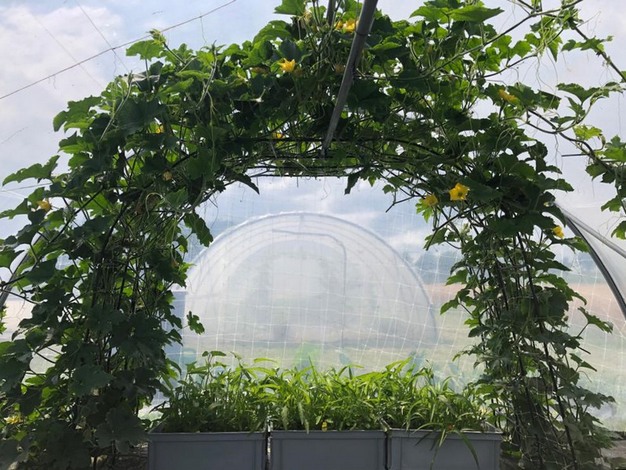
Winter melon growing over the rose arch.
Profitable
The aim of the cultivation was to do as little maintenance as possible to see if it would be possible in practice for growers. Whether it will be profitable for Dutch growers to start growing semi-tropical crops depends on the market. The location of the crops and the amount of sunshine are also decisive. The course of the summer is important for the growth of these crops. The researcher says: "Summers are expected to get warmer and warmer, which facilitates growing these crops."
"We grew pumpkin and cucumber crops over a rose arch. This allowed the fruits to start sagging well. They do the same in Thailand and Suriname. Water spinach likes it moist and a bit dark. In the research, the challenge was to use the nutrients from the soil as well as possible. We also grew Fabaceae crops, which is a family of legumes. That is the only plant family that can extract nitrogen from the soil. When one plants long beans between cucumber or aubergine, positive symbiosis occurs." Growing semi-tropical crops is manual work, and it requires further research to see if the crop is profitable for growers.
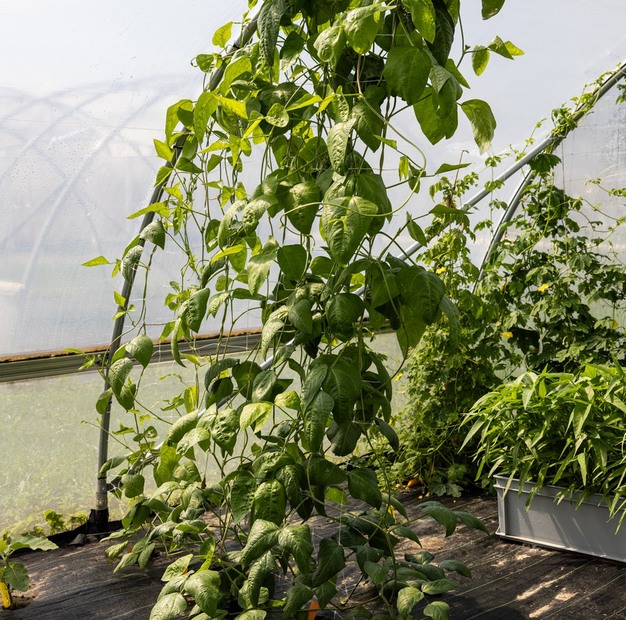
The cultivation of long beans.
Seed on the Dutch market
So far, there are no official seeds available on the Dutch market for subtropical crops. The researcher says: "We cooperated with East-West Seed. That is a Dutch family company that specializes in breeding and selling seeds of semi-tropical crops. They sell mainly in Southeast Asia, Africa, and South America. The Netherlands is an important hub for East-West Seeds. It was a trial for East-West to see how well this type of seed does in the Netherlands.
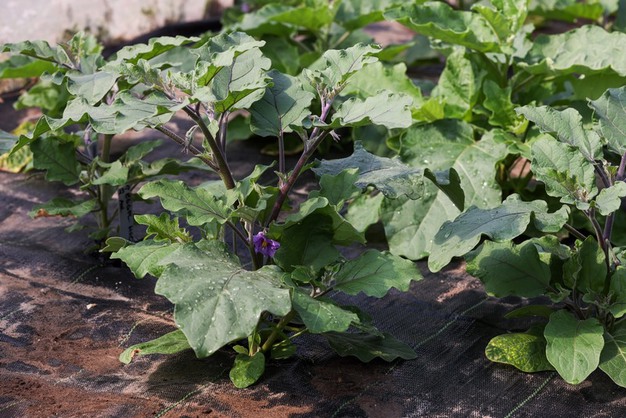
Aubergine.
Cold summer
How warm it is in the greenhouse is not very important. It should at least not be below zero degrees. Subtropical crops won't grow as fast in the cold, but they won't be damaged either. In spring, however, young subtropical plants are more sensitive to low temperatures.
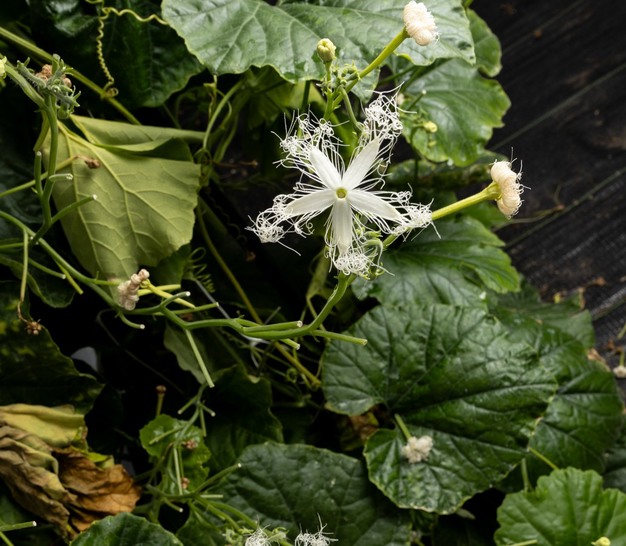
Snake Gourd.
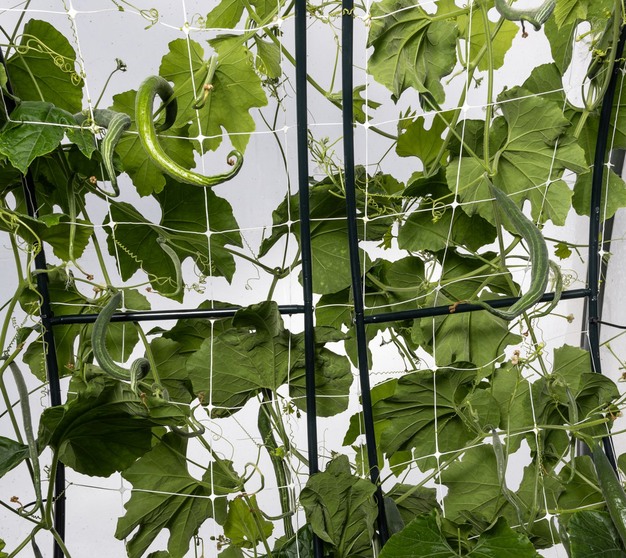
Cultivation of Snake Gourd.
More research for the Dutch market
It was not part of the project to investigate the market for these crops. "We are going to look further into the social and cultural aspect," Martina said. "There is a large group of people in the Netherlands with a migration background who are interested in semi-tropical crops. For them, it is more than food. The price of real long beans runs to 18 or 19 euros. They are not for sale in supermarkets. So far, it has come by plane from Suriname. People with that cultural background are willing to buy these semi-tropical crops. There is a big demand for this food because it is important for these people."
She goes on to say that people are already growing these semi-tropical crops in their backyards, for example, in Almere. "These people have knowledge of how to grow it. No specific research has been done on it yet, and the knowledge has mainly gone from mouth to mouth."
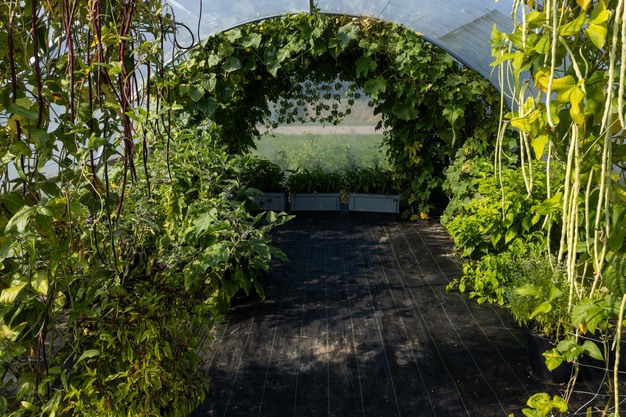
View into the tunnel.
No competition
The next step is to research the market, gather the knowledge and support, and bring the group of people from this cultural background into this development. It is the aim of the scientists at WUR to support people in need of semi-tropical crops and see what they need. Martina: "Only then do we look at market demand. Many open questions emerge as a result of the project. We don't want to compete and take away income from growers from, say, Suriname. One possibility would be to still import it from these growers in winter. We want to explore how we can further develop this together with those people from Suriname. Furthermore, we want to investigate which types of semi-tropical vegetables grow well together."
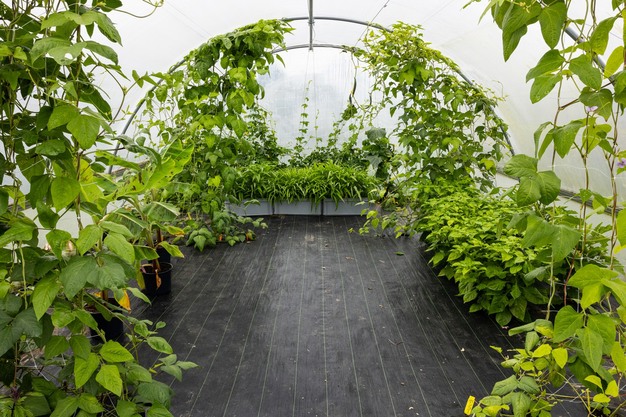
The semi-tropical crops in the tunnel.
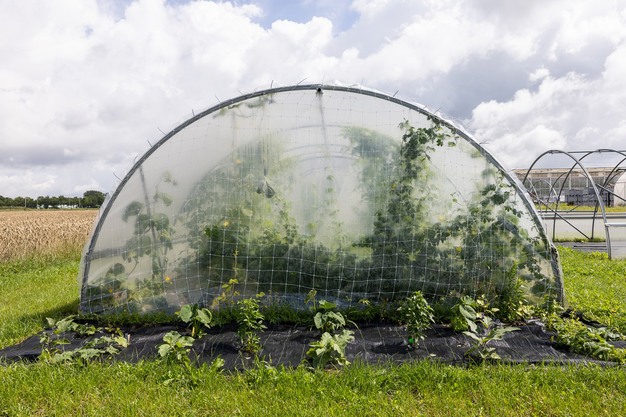
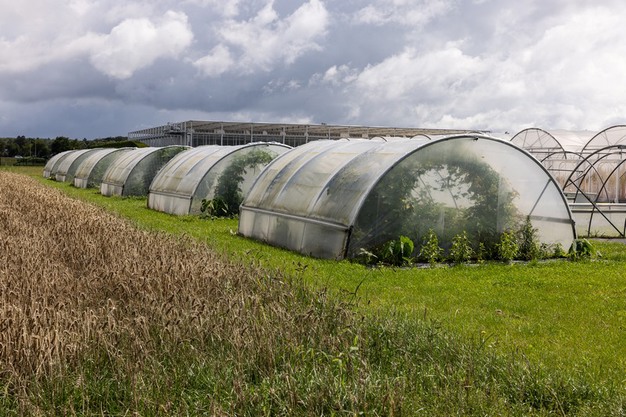
Photo credits: Jasper Zijlstra & Jeroen Verschoor © 2023
www.zijlstraverschoor.nl
For use, contact: [email protected].
For more information:
Martina Huber 
WUR
Droevendaalsesteeg 4
6708 PB, Wageningen
Tel.: +31 (0) 317 480100
[email protected]
www.wur.nl
